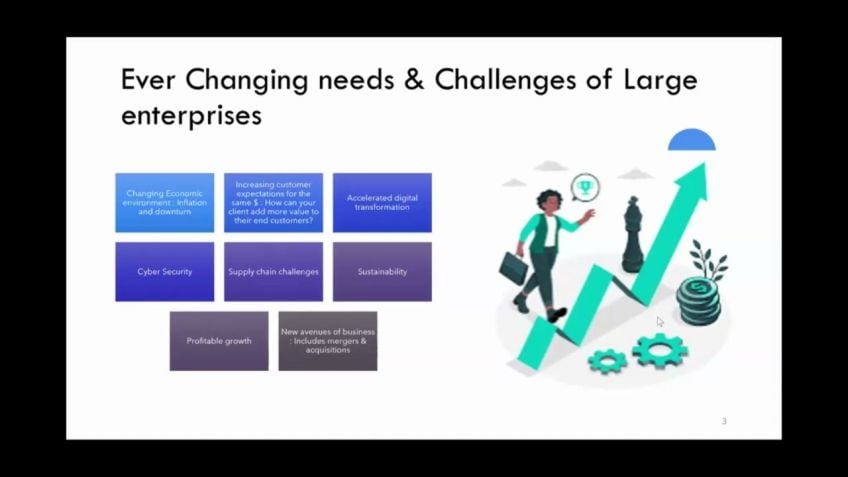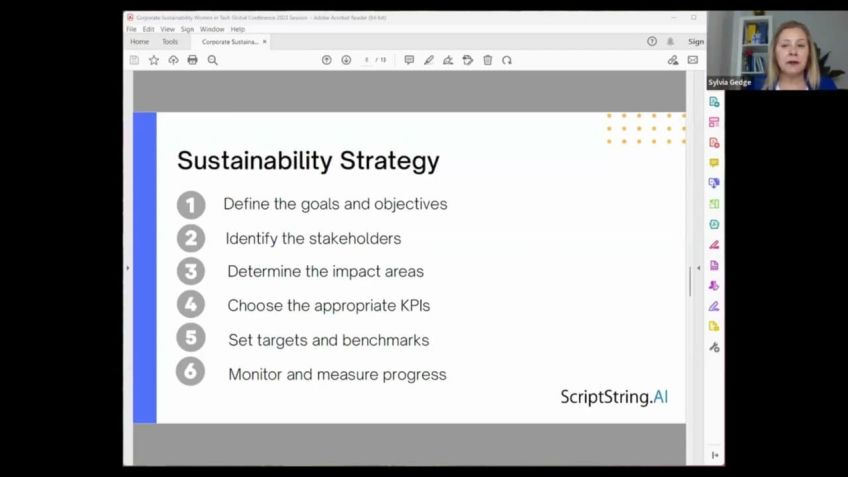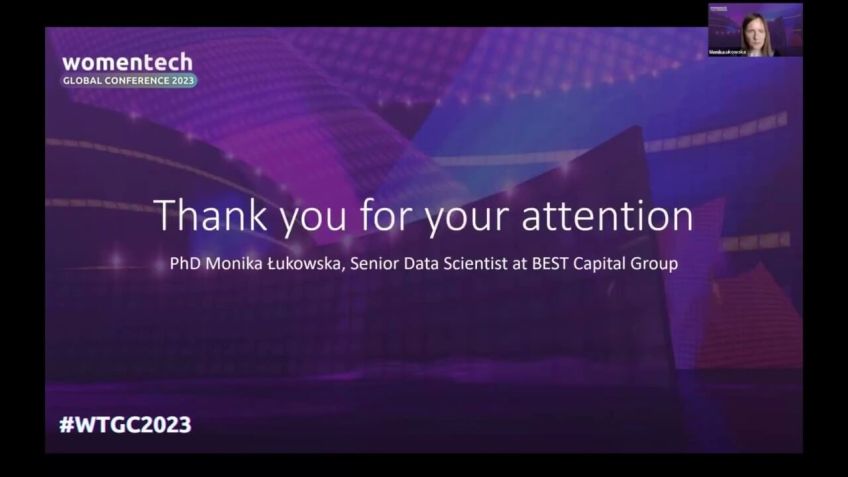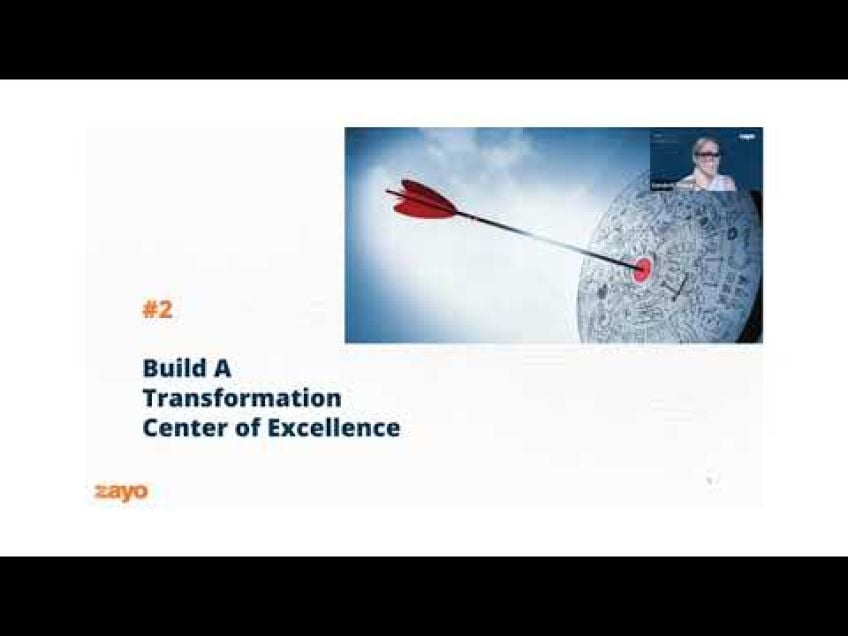Digital Transformation and Leadership by Anjali Kapoor
Anjali Kapoor
Director of Media Partnerships, Meta APACAn Insight into Digital Transformation In Media
In today's technology-driven world, digital transformation has gained significant traction across various sectors- one such area being in the media industry. Angelique Kapoor, the Director of Media Partnerships for Meta and APAC, shares her journey and the valuable lessons she learned over her career of 20 years in digital transformation.
A Glance at Angelique Kapoor's Career
Angelique started her career as a journalist, triggering her interest in digital media transformations. She worked for companies exploring digital business opportunities, which later led her to join Yahoo during its initial years as a search engine. When web 2.0 came into play with its interactive features, Angelique found herself tackling the complexities of storytelling on a mobile platform. Currently, she positions herself crucially in Meta, eagerly looking at what revolutionary technologies like AI, augmented reality, mixed reality, and virtual reality bring to the table.
Points to Consider in the Digital Transformation Journey
During her tenure, Angelique noticed that Asia Pacific has an exponentially growing economy, with around 90% of its businesses being SMEs(Small Medium Enterprises) using social media platforms. Hence, the digital transformation journey becomes more pronounced here than anywhere else around the world.
Engaging the younger generation, especially gen Z, who are digitally competent and have significant purchasing power, is a must to keep up with the rapidly changing media landscape.
Six Key Lessons on Digital Transformation
Several key lessons Angelique acquired over her career will pave the way for successful digital transformation. She identified six essential aspects, even referring to them as 'superpowers' from a leader's perspective:
- Start with People, Hearts, and Minds: A long-term digital strategy can only be successfully executed by winning over the people on your team. It starts with sincere communication and care for individuals involved in the transforming process.
- Communicate Clearly and Consistently: Amid significant changes, leaders should convey their objectives clearly and steadily for a seamless transition.
- Test, Learn, and Iterate: Small ideas can lead to significant results when tested, learned, and iterated over time.
- Identify Your Allies and Use Your Voice: Establishing relationships within the organization and using your voice to bring about change is vital.
- Be Patient to Get to the Long game: Succeeding in transforming towards digital requires patience, resilience, and persistence.
- Take Time to Recharge: Leaders need to take care of themselves, taking the necessary breaks to recharge and maintain their creativity and innovation.
In Conclusion
With the continuous evolution of technology and the internet, the need for digital transformation in the media industry becomes more crucial. As we step into a new era of technological advancements, leaders like Angelique Kapoor show us the way to embrace, adapt and lead in this ever-changing digital transformation landscape.
Video Transcription
Everyone. Nice to see you all. Um My name is Angelique Kapoor. I'm the Director of Media Partnerships for Meta and A PAC. And in today's session, I'm going to cover um what I have learned over my career of 20 years in digital transformation, working at media companies.So first, let's get started with a little background about myself and my career. My career in technology has evolved over the past 20 years and I've had to constantly re invent myself at each stage. I started as a journalist first curious about how to tell stories about people.
And I wrote for newspapers and magazines in Canada and globally and web. 1.0 was a big shift because we went from print and TV to websites. It was primarily text and some images, mostly one way communication on a computer screen. But during that time in my career, I worked at companies that were trying to understand and build a digital business and tell stories in new digital ways. I then moved to Yahoo, which at the time was a search engine with seven headlines on their home page. But over the five years I've worked there, they were run, I was running product and editorial and it became a huge media company just to be clear, video streaming had was just becoming popular, especially with Yahoo's purchase of broadcast.com and youtube had just launched. Then came web 2.0 which was really much more interactive. And on a mobile small screen storytelling became very different, especially for traditional media companies, photo sharing became popular. Video was watched on a small mobile screen and social platforms launched. So there were audiences across many surfaces like websites, mobile apps and social platforms. And now I find myself at meta sitting at the precipice of another evolution of technology. As we look at the power of A I and immersive experiences like augmented reality, mixed reality and virtual reality web 3.0 is again another example of how technology is rapidly shifting alongside how people consume content.
And it's exciting to be at this new technological evolution in A PAC to put it simply Asia Pacific is where there's a lot of growth is happening. Our region is large, diverse and dynamic and so many of the behaviors that drive connection and build community are just more pronounced here in Asia Pacific than anywhere else in the world. There's more people in Asia Pacific. We have nearly two third of the world's population living in a region. Our economies in Asia Pacific are more driven by SM BS. More than 90% of businesses in Asia Pacific are SM BS and that they are the backbone of our global economy. We're more mobile with over half of the world's mobile subscribers right here and we're more social. If you've seen the latest emarketer report, nearly 60% of worldwide social network users will be based in Asia Pacific in 2023. Even with this, with just 2.7% growth, the region will add more users this year, over 59 million than the rest of the world combined. And media consumption habits are shifting as well with Gen Z or as we would say, Z first, let me introduce you to Z. She is in her early twenties, she speaks a language of memes and she watches an average of 7.2 hours video a day.
Actually Z is just a fictional character but she shares the common interests and behaviors of 2.5 billion Gen Zers compromising 32% of the world's population and Gen Z is going to be changing the media landscape. Make no mistake about that. Not only do they compromise one third of the world's population, but they also have the highest level of digital competence compared to any other generations before them. Social media is the top source brand discovery and product research for Gen Z. And 52% of Gen Z gamers feel more like themselves in the metaverse than in real life. Gen Z also has significant purchasing power of 44 billion annually and is growing and their media taste is changing. As I said, according to the Reuters digital news report last year, young people are also increasingly choosing to avoid the news with a substantial rise in avoidance among social digital natives like Gen Z. Instead they like comedy, entertainment and content and they prefer watching short videos under three minutes in length. So that's a little bit about the landscape that I work in now and where I work in Asia Pacific. But now I want to move on to six leadership lessons on digital transformation. I've been very fortunate to work at the center of media and technology for over the past 20 years. And I have learned by test and error launching innovative products and also failing many times.
There are six lessons that I have applied throughout my career that I have made me successful through the different stages of digital transformation and technological innovation. Digital transformation really is about strong leadership, not just from the top down but leading with influence across.
I like to think of these six as superpowers that you have in your pocket, as a leader. And I have found these six lessons have held strongly through each evolution of my career. So let's get started. Number one, start with people, hearts and minds. The single most important lesson I've learned over the years is that change and transformation cannot occur unless you start with people first. Simply put you have to change hearts and minds of people to win them over a long term digital strategy, your peers, your colleagues, your team, those are the people helping you through the change and you won't be able to execute on a strategy. Build a new culture, find a new North Star for your business. Unless you start with people first, you need to do this with care and empathy and clear communication on where that strategy is going. We'll talk about communication in a minute. But in web 1.0 many CEO S and business leaders told their newsrooms and media companies, we are going to be digital first, but they didn't tell them what they meant in a day to day job. And the biggest mistake I made early in my career was to try to force a digital mindset and strategy into a media organization that was not ready for that change.
I didn't realize how much you had to educate and explain first, talk to everyone about the strategy and what it meant. And I assumed everyone understood what digital first meant. So people before strategy and start with those hearts and minds because people need to help you along the digital transformation journey, respect the stories and the content, especially at media companies where you're working and embrace the storytellers. Even the older traditional journalists, they have experience in the media space. This will make your content a product and have it shine. It's a lot of talking asking questions first and you really have to be passionate about working with people before you get to that strategy, be approachable.
Uh you know, being a leader is emotional connections as well. And this can take you through whether you're a young leader just starting out as a digital native, being a leader in a newsroom or media company or someone who makes the transition to digital leadership lesson number two, communicate clearly and consistently. For those who are not familiar with the media industry. 15 to 20 years ago, I wanna paint a picture of what it was like in a newsroom or a media company. On the left is a typical newsroom or media newsroom where journalists used to fax text or email to file stories or to traditional news broadcasting and studios fast forward to now and content creation is much different. You have large media companies creating lots of video and publishing to multiple interfaces and you have content creators who are small one person media enterprises that are very successful that change in content creation and consumption habits has driven digital change over time in media companies as well.
So communication is the most important thing in your toolkit when you need to make a change at scale, clear, consistent communication that connects the threads between the day to day jobs and where the organization needs to be long term use data to help inform what your communication is and be clear what digital first means to those tier teams on the ground, you need to find a way to communicate progress and data results in an accessible and consistent way.
It ties back to changing hearts and minds and it really builds transparency into your digital transformation process. I'll use an example when I worked at Bloomberg Media leading digital strategy in A P A where we needed to educate quickly many offices that were spread across the Asia Pacific region. The problem we really had to solve was how to get the newsroom and the TV. Journalists working together to create subscription worthy digital content and build an A PAC audience. The tactic was very simple, a weekly newsletter that I sent out through email always on a Friday that went out to more than 6 to 800 journalists and editors and partners in the region.
It led with content first observations, followed by data, but it was very simple. Top 10 stories of the week, lowest 10 stories of the week. And it tracked simple data with user behavior, not just on our website, but across all our mobile broadcasts and social media channels data that allowed the journalists to understand what was happening and working in A PAC and globally for an audience. When we started to send it out, it was only a few people who would open it and read it every week. But over time, people became curious about why certain stories were resonating the overall newsroom perce perception at the time was that only lighter cat content videos as we called them, only lifestyle stories and good images would work but they were wrong. The data pro proved them otherwise, the top stories were about macroeconomics, geopolitics, personal wealth, finance, and family, businesses and financial trends. I would sometimes get a call from a senior editor asking why did my story or my journalists story not make it into the top 10 stories for the week. Why didn't it resonate on Facebook?
But over time, it took a year, the open rate went from a few people to more than 80% each week. Opening that email newsletter, consistency and clear communication help to build, buy in and educate those hearts and minds. It allows you to explain things and let data speak for itself. This will create a culture that starts to use data to inform content and audience interests. And it will help you educate at scale large teams that need to understand data to make decisions. Lesson number three, test, learn and iterate small ideas turn into big ideas when you can test and learn and short term goals can build a path to long term successful digital transformation strategy. So make sure you test your hypotheses, measure it with data, learn from the project and the process and then iterate on it. The one thing I've realized is that innovation does not only have to be technology, it can be solving problems with a process or set up to set up a new solution. It can be workflow, incremental design change. But you need to have an open mind to test and learn new things with a specific goal in mind. This is the only way you can stay relevant in all the technological shifts that are happening.
And one thing I will say is learn from the youngest members of your team, the digital natives like Gen Z who have grown up with this new technology, ask them stupid questions, let them know, show you what they're doing and what they're creating and learn from them. In the past year. At meta, we've introduced a new storytelling short form video format. It's called reels across Instagram and Facebook. I make it a point to test and learn with any new product we are sharing with our partners. Um and video editing is very different nowadays than it was even a couple of years ago. And you know, there are a lot of people on my team who are doing much more innovative things with content with reels and also working with top creators in the region. So we created a team session where we could all learn together. And elevator fashion was born from that session where I learned the basics of reels and video editing for short form video by someone much younger than me. It's a test account and I do put myself out there publicly and I commit to creating one a week. You need to test the technology with your team, your partners in terms of understanding it. And it allows you to give meaningful feedback to product teams. It's amazing how much feedback I've had on this small Instagram channel. And it's made me really learn and be empathetic about how you create short form video. So make sure you use opportunities to test and learn throughout your career.
Offer to test a new technology, give feedback on a new feature on an app, make friends with your product team to get the opportunity to test and learn. Lesson. Number four is about identifying your allies and using your voice, find the allies in your organization. What does that mean? Some people call it their own personal board of directors. But these people are the ones that are gonna help you push through change and digital change. It's important to have almost three types of allies in the workplace. First, you need the people who can speak up for you in the room and help you execute your goals for change. This is usually top down the CEO or the managing director. They will be your voice when you aren't even in the room. Second, build a group of people that you know, have influence in our decision makers, update them constantly on your strategy and build trust and go to them when you need something done, you can always back channel to get decisions made when you can't do it in public with this group of people.
And third build a group of peers who you can have real talk with when something is going wrong. Use them as a sounding board to test an hypothesis, your hypothesis. I also have been very fortunate to work at a company like meta that focuses on DE I in the workplace. But that was not always the case. It's so important to see future generations of media leaders that represent diversity. There have been many times. I show up to a meeting where I'm the only woman in the room. So I would also say it's important if you're a leader to be an ally and voice for others, do not be afraid to give your point of view. Even if it's different, you have been hired for your experience and your perspective. Earlier in my career, I benefited from the coaching and mentorship of many allies, allies who believed in me. Despite many naysayers who thought digital was a passing fad. When I started the gold and mail in Canada, it was a very traditional newsroom and had a long storied history as Canada's national newspaper. I had just joined them after a five career at y five year career at Yahoo running product and editorial globally for a lot of the media products they were building. But the new editor in chief and publisher wanted to force digital change their solution.
Put my name on the mast head, which is the printed part of the paper as managing editor, digital alongside all of these tenured journalists and editors. I remember my first day sitting around that morning meeting and being unable to find my voice. But the support of the editor in chief and the publisher was unwavering at times, they coached me to speak and at other times they spoke for me, but they always drove the change in the strategy along. And one day with the photo on the left, I ended up working on a really impactful project because I raised my voice. This was a project with Bono and Bob Geldof guest editing the globe and mail paper and digital site. In 2010, I use my voice to speak up and offer a completely different and unpopular strategy. But one that really resonated with a few people in the newsroom and our team ran the digital strategy. So that's a photo with them on the left many years ago in a newsroom and on the right is a team of people of amazing women that I work with today who are leading change themselves. These are some of them on my team giving back their time in AD E I and career session with the Asian American Journalist Association, the Asia chapter. We were able to work with them on a meaningful report on advancing news diversity in Asia. Lesson.
Number five, be patient to get to the long game di Digital transformation takes time and it's not always a straight path. Remember, you are always going to be testing, learning and iterating leadership through digital transformation is really a long game. Don't expect it to be instant transformation.
I just read recently that Netflix retired its DVD mail service after 25 years. That's 16 years after the launch of their streaming service in 2007. And that's 25 years after they founded the company as a legacy DVD. Business transformation takes time. It's like turning a big ship that needs all of the previous lessons. We've just talked about to be successful for the long term. In several of my jobs, I have worked in traditional media that have focused on building pay for products, whether it's subscription content O TT or building a 0 to 1 strategy for a digital PNL. It really does take 3 to 5 years to build a culture that embraces digital products like this, you have to think of your content as a product. And while you may have a strategic 3 to 5 year plan to get there, there will be new technology that forces you to innovate, test, learn and fail and then pick yourself up again. I love how far we've come from text based media less than 10 years ago. I'm always amazed at how we continue to innovate on storytelling and new formats to show information. And I'm really looking forward to kind of that next immersive experiences of storytelling in the future. My last lesson I think is about yourself and taking time to recharge.
It can be very hard as a leader to be the consistent voice, trying to change culture and strategy and it can take a toll on the person who's the change agent within these organizations. You do need to put up barriers and take time out because digital transformation is that long game. You need to have that reserve to kind of continually guide people who might be saying no or pushing back on those new ideas. Digital is also 24 7 and it can be exhausting especially for women in technology who have families. So make sure you take time out for yourself as a leader to sustain for the long game too often. The idea of digital transformation is the leader is always going to be on technology and available. But you still need to be innovative and creative and you have to take time away from all of that because you can't work in an intense transformation environment without giving yourself space to think at meta. We call this leading from within um the premise being that you could not be a good leader unless you take care of yourself. So you really need to try to carve that out consistently in your work week.
I do this on Monday and Friday where I block off creative thinking blocks and I use my time away from my computer to exercise to listen to new ideas on a podcast, to read a lot of books. I'm also a mother, I'm a dog mom. I'm a hockey mom. I have two boys and I love to travel, um, as a family and I make sure that I take time out for that because burnout can be real in this type of role and you need to be mentally and physically fit to be a change agent leader. It takes energy to be that constant change agent. So make sure you take time out for yourself. I feel very fortunate that I work for a company that believes and lead from within and I can be flexible to do this in the last 20 years. I feel I've had to re invent myself with my career path as technology shifted and changed. And all of these six lessons have helped guide me as a digital leader. Number one, working with a people first mindset, number two, building strong communication tactics to show strategy.
Number three, continuing to innovate and test and learn. I continue to do that even now as we're pivoting as a technology company, embracing your allies, using your voice and helping others to find theirs through coaching and mentoring. Number five, Digital Transformation in media is a long game and change takes time and number six take that time to look after yourself as leaders careers are long and can evolve. At every moment of digital transformation. And I think this innovation and evolution of storytelling and technology is so exciting and I can't wait to see what will come in the next 20 years. And I really feel fortunate to work at a company that is planning for that next technological evolution with A I and 3D immersive experiences and the new job opportunities that that might bring. So I hope you found these six lessons helpful. Really appreciate you listening. Um We won't be taking questions, but I'm happy to have you reach out and connect on linkedin and I look forward to the rest of the conference. Thank you for having me.






